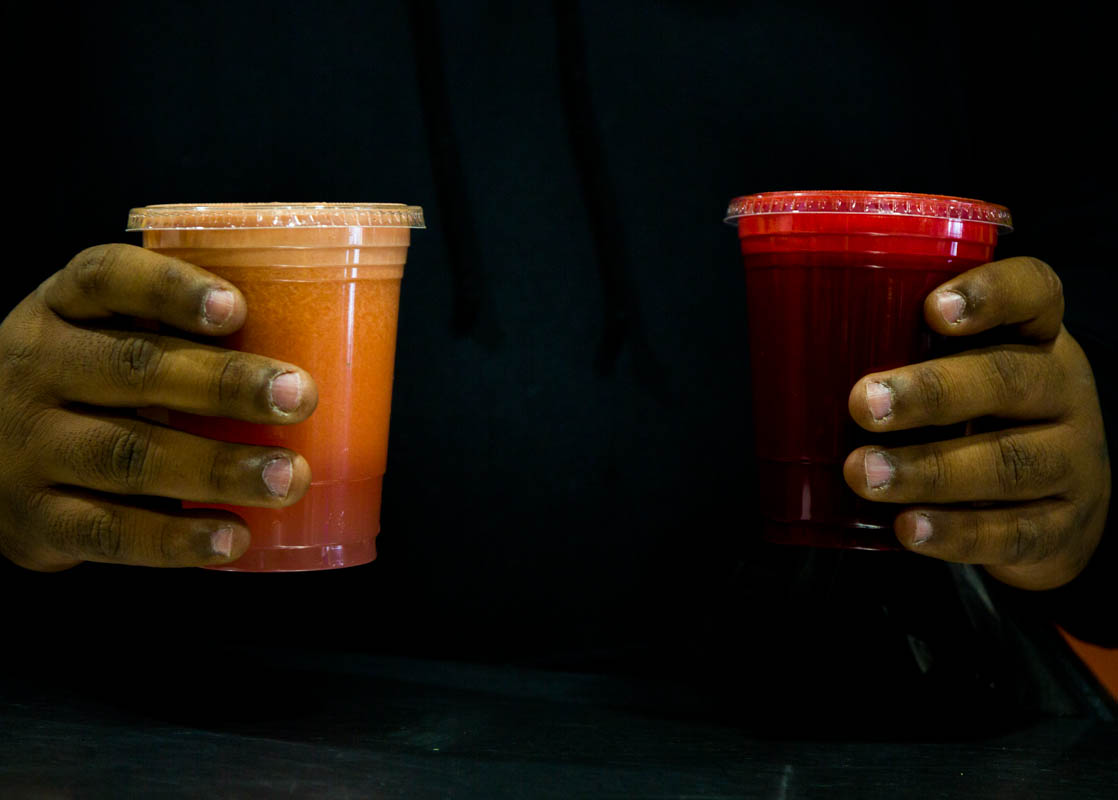A Juice Bar in the South Bronx
By Rahima Gambo
A Juice Bar in the South Bronx from Rahima Gambo on Vimeo.
By 4 p.m., Javone Rodriguez had downed two $5 “Armageddons,” one “Around the world” and a $3 wheat grass shot.
Rodriguez, 27, a soft-spoken media tech student with braided hair, has been coming to Juices for Life, a juice bar that churns out cold-pressed juices, smoothies and healthy concoctions, since it opened in 2011. The Around the World, a tonic drink infused with fermented herbs, is a favorite of his.
Before this, Rodriguez had to travel to Harlem, a one-hour commute to get his juice fix, a treat he valued as a vegetarian conscious about what enters his body.
Javone and his fellow patrons are proof that juicing, a lifestyle found more often among rich vegan women, is for everyone.
Opening a juice bar on Castle Hill Avenue was a radical idea when it was first initiated by famous Bronx rapper Styles P, Trinidadian-born juicing expert Nigel Rollocks and Leo Galvez, a local entrepreneur, in 2011 when the food culture of the neighborhood was dominated by chicken gyros and grilled cheese sandwiches.
In many ways, fast food joints still dominate the avenue. Wedged between a small, unlikely church and a newly opened cafe, Juices for Life strikes a different tune in a neighborhood saturated with bodegas, liquor stores and fast-food spots advertising bagels, burgers and pizza.
In the 1990s Castle Hill was known as a high crime, low-income neighborhood with a declining economy and real estate values. Now the neighborhood is touted as a quiet residential area where house values have gone up 3.8 percent over the last year, according to the real estate information site Zillow.
The Reggaeton blasting juice bar with a menu that reads like XXL magazine is perhaps symbolic of this changing Bronx neighborhood.
The U.S. Department of Agriculture has designated the South Bronx a “food desert,” defined as a low-income area devoid of healthy alternatives and lacking easy access to affordable and nutritious food.
The large supermarkets that dot this stretch of the avenue raise the question whether the Castle Hill neighborhood deserves this classification.
Dressed in baggy jeans and a Yankees cap, Andre, 27, ordered a bottle of bark, which he described as “the natural element of Viagra.”
“Some people buy wheatgrass and others buy coffee, when you come to a places like this it’s a way of life,” he said as he tipped the bottle of brown liquid into his kale infused “Green juice.”
At 4 p. m. on a cold winter afternoon, the bar is packed. The noise from the blenders mix with music from the radio and customers ordering specials like the “Weight Loss,” a mixture of grapefruit, lemon, and grapes and the “Yonkers,” a sour mix of mango, lemon, and pineapple.
Cindy, a school crossing guard and her stepdaughter, Jasmine, ordered an orange pineapple juice. Patrick, a bald construction worker, sipped sea-moss from a straw as a substitute for lunch.
The usually high price of juices, sold on average at $9 in upscale Manhattan Juice bars like Organic Avenue and Juice Generation, has opened the doors to juicing to a select few who can afford it and closed the doors to those who can’t.
Try telling that to Javone, Andre and Jasmine.
www.rahimagambo.com
Tags: juice bar, Juices for Life, south bronx


Your Comments